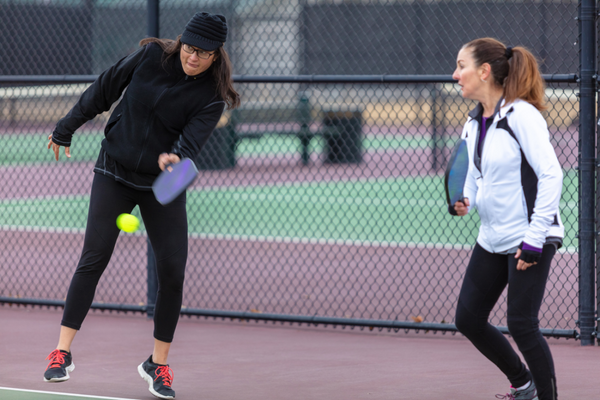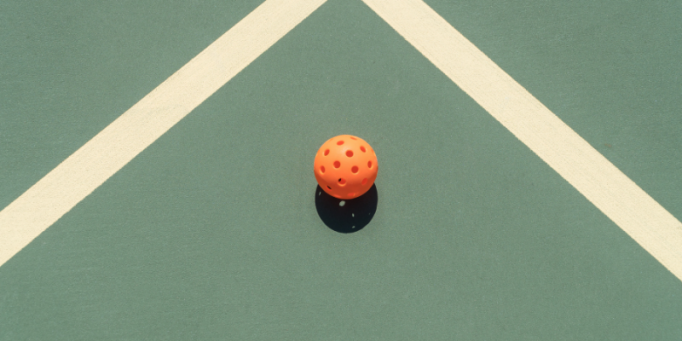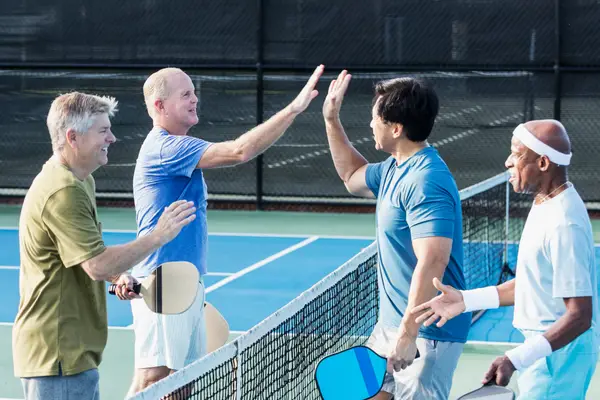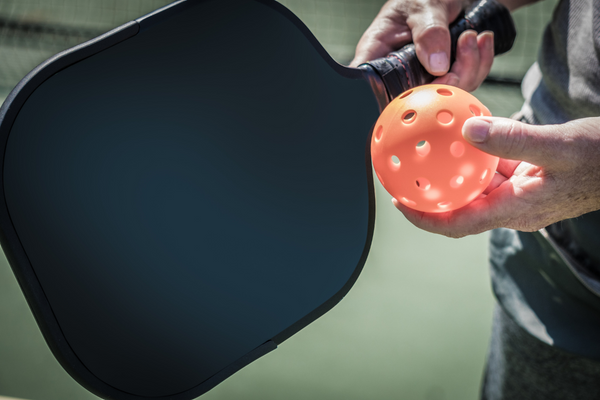Want to win at doubles pickleball? Struggling to play in a duo with a right and left-handed player? Why not try stacking?
Stacking is a technique in pickleball that allows each teammate to make sure their stronger hand is covering the middle of the court. It allows both players in a team to play to their strengths during a match.
Although it is a complex and advanced strategy, effective implementation can definitely give you a leg up on the court!
Read on to find out how stacking works, what benefits it has, and other factors teams must consider before trying this one on the court.
What Is Stacking in Pickleball?

An advanced pickleball strategy, doubles players use stacking as a way to gain an advantage on their opponents.
Instead of the traditional positioning across the court, both players stand on the same side of the court as an opening stance. Once the rally begins, they may move off into different quarters depending on the direction of the game.
Most teams can’t use this strategy because it works best when one partner is a right-handed player and the other is a left-handed player.
Then their increased combined range of motion lets them outmaneuver other teams.
Think of it this way. When left-handed player A is on the right side of the court, and right-handed player b is on the left side of the court, both players have equal access to the center of the court. More than that, their dominant strokes are reserved for the middle instead of a weaker backhand.
Teams that master stacking, have the middle of the court locked down against any type of attack.
That said, pickleball stacking is an extremely complicated strategy that requires a high level of coordination and communication between both team members. While an effective stacking team has an amazing advantage, if the strategy breaks down during the volley it can be disastrous for your gameplay.
Suggested: Best pickleball paddles for advanced players
The Legality of Stacking in Pickleball

Yes, stacking is definitely legal. The rules for pickleball doubles matches only restrict where players must stand when they are serving or receiving the serve.
For example, if Player B is serving from the right side of the court they cannot move to the left side of the court. However, there is nothing preventing Player A from joining their team member on the right side of the court.
Once the rally begins players are free to move to any side of the court depending on their strategy. That is because unlike other games like table tennis, pickleball does not have a fixed order of shot-making.
In doubles pickleball, the players must decide among themselves which member will take the shot. There are no pickleball stacking rules and it is an acceptable form of gameplay.
Benefits of Stacking in Pickleball

When executed effectively, the main benefit of stacking is in the range and strength it provides by capitalizing on each team member’s strengths.
With traditional positioning, the right-handed player serves from the right end of the court, while the left-handed player remains on the left side of the court.
In this scenario, each player is resorting to their backhand when hitting balls that land between them.
Normally, a player’s backhand is weaker than their forehand and that is what the stacking strategy relies on.
In stacking, both players start off on the same side. If they are the serving team, the right-handed server rushes to the left side of the court, while the left-handed player remains on the right side of the court.
When it is the returning team they first respond to the serve and then switch positions. This means each player can cover the middle of the court with their stronger forehand.
While the strategy is mostly used by a duo with a right and left-handed partner, it can also be used by players who use the same hand where one player has a stronger backhand than the other.
The main benefit of this strategy is maximizing strength towards the middle of the court!
Full vs Partial Stacking in Pickleball
There are two ways teams can use stacking in pickleball.
- Full Stacking
- Partial Stacking
What is Full Stacking in Pickleball?
Full stacking means stacking for each volley including serves and returns.
Theoretically, this would put your team at an advantage each time. However, in reality, full stacking is a complex and difficult process.
It requires an extreme level of communication and coordination between both team members during the match, because you need to know who is going to serve and return each shot and from which side of the court.
Keeping track of your partner’s every move can become tiresome for many duos. But experienced professional teams can definitely pull it off!
What is Partial Stacking in Pickleball?
The second option is Partial Stacking.
This is when your team stacks for each serve but not for the return of serve.
Dividing your shots makes it easier to keep track of where you’re supposed to be and where your partner is for a particular shot.
And you have an advantageous position when it comes to scoring shots. On the flip side, you give the opposing team a chance to make points when it’s their turn to serve. There are pros and cons to both strategies so it all comes down to what you’re comfortable playing!
How To Stack in Pickleball

Before you can learn how to stack you need to be familiar with the traditional positions in pickleball. Normally, you have one player on each side of the court. When the serving team wins a point the players switch positions. Otherwise, each player remains on their side of the court.
Now assume that one of these players has a weak forehand, while the other has a weak backhand. The team began the rally strong but after the first point, the players became stuck in an unfavorable positions. A stacking strategy is meant to help doubles teams avoid getting stuck!
- Stacking on Serve
The correct position for the serving team is to have the left-handed player serving from the even side and the right-handed player serving from the odd side. In either case the players have their stronger forehands towards the middle of the court putting them at an advantage.
However, when the serving team rotates it will put the left-handed player on the odd side and the right-handed player on the even side. This would put each player’s backhand in the middle.
When stacking, the player would simply serve first and then slide onto the other side. The goal is for each player to have their strongest playing hand covering the middle of the court!
- Stacking on Return
Again you will want the left-handed player to return from the even side and the right-handed player to return from the odd side. If the players are rotated in the opposite positions, lefty on odd and righty on even, they will return from that position and slide across to the other side.
The trouble with stacking is keeping track of which player is serving or returning, and where they should ideally be standing. But it becomes a lot easier when you remember the basic principle. Stronger shots towards the middle!
When To Stack in Pickleball
A team needs to stack when they are stuck in an unfavorable line up. For example, if the left-handed player is stuck serving or returning from the odd side or the right-handed player from the even side they will need to stack. That is assuming both players have stronger forehands!
If a player has a strong backhand you will want to ensure that member is standing opposite to this rule.
The best time to stack is when one or both players do not have their strongest hand covering the center of the pickleball court.
If you can use stacking to move around your players till you have maximized strength in the middle then you should!
Disadvantages of Stacking in Pickleball
Teams stack to maximize their scoring ability, but it requires a lot of practice and patience to get it right.
The biggest risk of stacking is that the players may get confused about where they’re supposed to stand or who is supposed to serve or return.
If a player finds themselves in an incorrect position during the match it can be difficult to correct it. Players cannot ask the referee if they are the correct server during the match.
It is only when you are playing from an incorrect position that the referee will stop the match to point it out.
Things To Consider When Stacking in Pickleball
Your team’s pickleball stacking strategy will vary depending on your strengths and weaknesses. So before teams decide how to move forward they need to ask themselves three questions.
- What is the strongest playing hand for each player?
- What is the ideal position for each player in the receiving team?
- What is the ideal position for each player in the serving team?
Once you’ve answered these questions it is a simple game of trying enough permutations till you figure out what works best. Then you simply practice till you’re ready to show off on the courts!
Conclusion
At the end of the day, stacking works best when both players know exactly where they should be at any given point. If you can trust your partner to keep up on the court, then you can effectively implement the stacking strategy!

